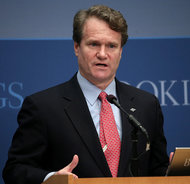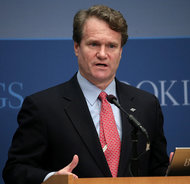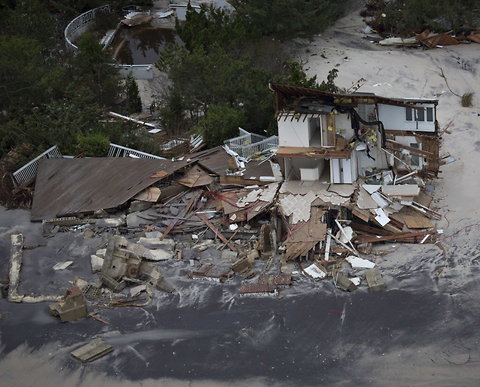For now, though, builders are building, sellers are selling and mortgage lenders are less nervous about extending credit to buyers.
The heady price increases in the first half of the year slowed a bit in July, according to data released on Tuesday.
But in the face of pent-up demand and emboldened consumers, home values were still heading upward at a healthy pace, rising 12.4 percent from July 2012 to July 2013, according to the Standard Poor’s Case/Shiller home price index, which tracks sales in 20 cities.
A separate index of mortgages backed by Fannie Mae and Freddie Mac showed an 8.8 percent gain in prices over the same time period.
Two national homebuilders, Lennar and KB Home, reported significant revenue growth and profits in the third quarter. Lennar said its third-quarter earnings rose 39 percent over the third quarter of last year, and KB said its profit had increased sevenfold.
“We still have a lot of young people that are going to start moving out and forming households and we’re going to have to find housing for them,” said Patrick Newport, the chief United States economist for IHS Global Insight. “There are shortages of homes just about everywhere.”
Higher home prices help the economy not just by strengthening the construction and real estate industries, but by making homeowners feel wealthier and more likely to spend.
While the number of Americans who lost the equity in their homes in the housing crash set records, rebounding prices have helped nudge more and more households back above water. According to CoreLogic, 2.5 million households regained equity in their homes in the second quarter.
Mr. Newport said the full effects of higher mortgage rates had probably not shown up in the numbers yet.
Rates increased from about 3.4 percent on 30-year fixed-rate loans in January to about 4.4 percent in July, according to a survey by Freddie Mac, and many loans were written at even higher rates this summer. But they remain well below typical rates in recent decades, and mortgage borrowing costs have already eased a bit from their recent peak now that the Federal Reserve opted last week not to begin a wind-down of stimulus measures.
Rising rates may not torpedo the housing market recovery, but they have made refinancing much less appealing.
The number of mortgage applications for purchases has climbed by 7 percent over the last year, according to the Mortgage Bankers Association, but refinance requests have fallen by 70 percent since early May.
As a result, banks have laid off thousands of workers in their mortgage units. Citigroup laid off 1,000 workers from its mortgage business, it said on Monday, following Wells Fargo and Bank of America, which have both done layoffs in recent months.
Refinancing also gave households more spending power as it lowered monthly payments.
Analysts offered a cornucopia of reasons for the continuing strength of the housing market: people rushing to buy before prices and interest rates increased further, a gradual relaxation of lending standards, an uptick in inventory, a smaller share of foreclosures in the sales stream and large-scale buying by investors looking to put houses on the rental market.
Still, some analysts questioned whether fundamental factors like job and wage growth would sustain the market and restore first-time buyers to the market. Others warned of a lurking shadow inventory.
“While recent results have been considerably better than those seen earlier in the cycle, and also better than we had anticipated, we have not given up on the argument that a large supply overhang of existing homes (factoring in all those in foreclosure or soon to be) promises to keep pressure on prices for some time,” Joshua Shapiro, the chief United States economist for MFR, wrote in a note to investors.
Once the backlog of demand is absorbed, continued strength will depend heavily on consumer confidence. That’s where politics, including a looming battle over federal spending and the debt ceiling, could stall improvement.
“The real test will come over the next few months, given the sharp drop in mortgage demand and the potential for a rollover in consumers’ confidence as Congress does its worst,” wrote Ian Shepherdson, an economist with Pantheon Macroeconomics.
On Tuesday, the Conference Board, a New York-based private research group, reported that Americans’ confidence in the economy fell slightly in September from August, as many became less optimistic about hiring and pay increases over the next six months. The September reading dropped to 79.7, down from 81.8 the previous month, but remained only slightly below June’s reading of 82.1, the highest in five and a half years.
Year-over-year prices were up in all 20 cities tracked by Case/Shiller, but the gains varied widely, from 3.5 percent in New York and 3.9 percent in Cleveland on the low end to a frothy 24.8 percent in San Francisco and 27.5 percent in Las Vegas.
The month-to-month increase in the Case/Shiller index slowed to 0.6 percent, after gains of 1.7 percent in April, 0.9 percent in May and 0.9 percent in June.
Asked if the slowdown in growth was alarming, Robert Shiller, the Yale economist who helped develop the home price index, said no. “I’m not worried. I think that would be a good thing,” he said.
“I’m worrying more about a bubble — in some cities, it’s looking bubbly now.”
Still, Mr. Shiller said, even the bubbliest markets were still well below their peak.
Other analysts raised the same point. Prices in San Francisco are still only at 2004 levels, cautioned Steve Blitz, chief economist for ITG Investment Research. “For those who bought and still hold homes in 2005, ’06 and ’07, they may still be in a negative equity position, depending on the terms of their mortgage,” Mr. Blitz wrote. “Don’t let those double-digit year-over-year percentage gains bias opinion to believe all is all right.”

Article source: http://www.nytimes.com/2013/09/25/business/economy/home-prices-still-rising-but-at-slower-pace.html?partner=rss&emc=rss





